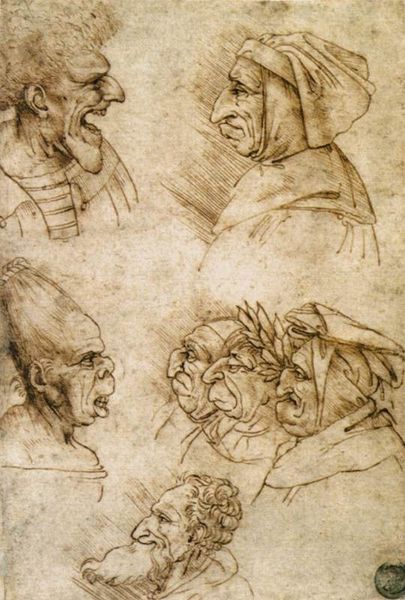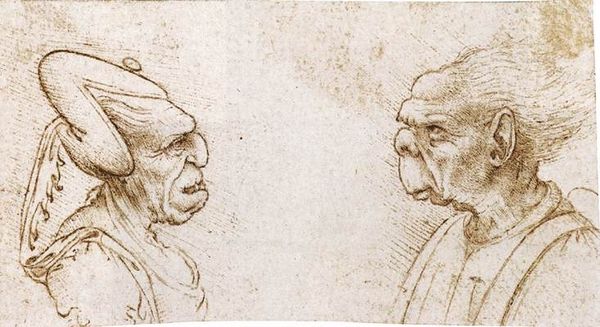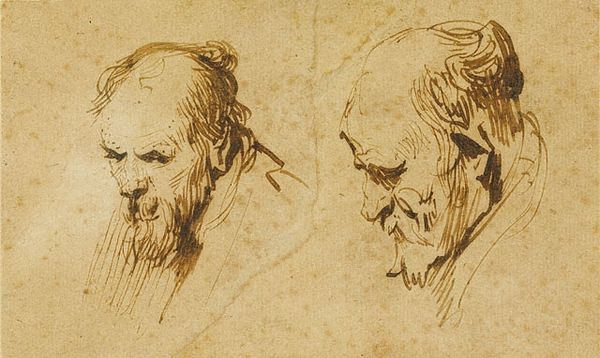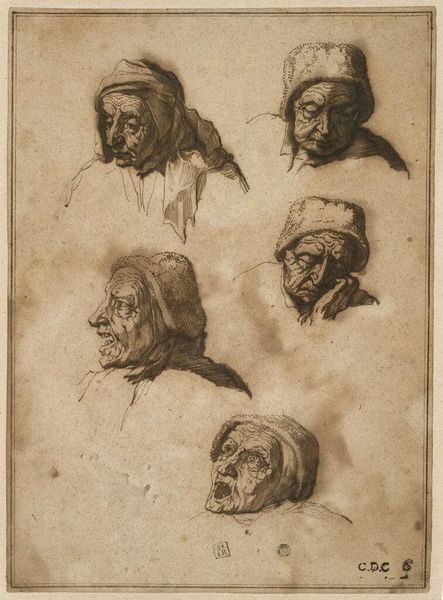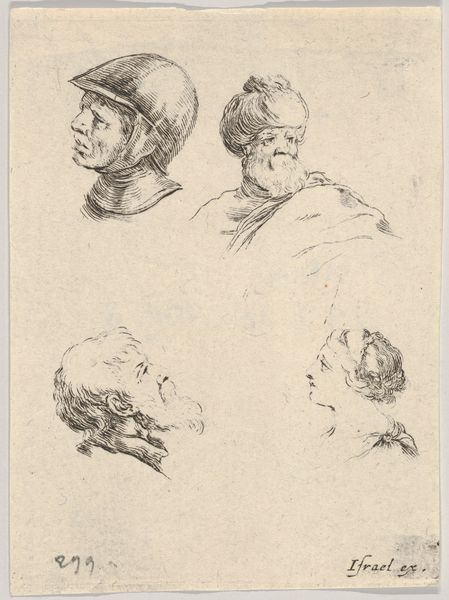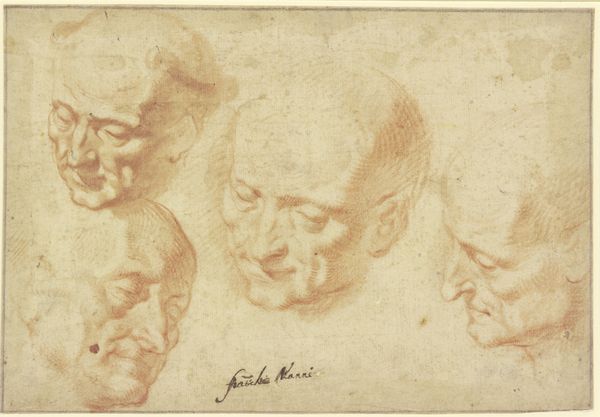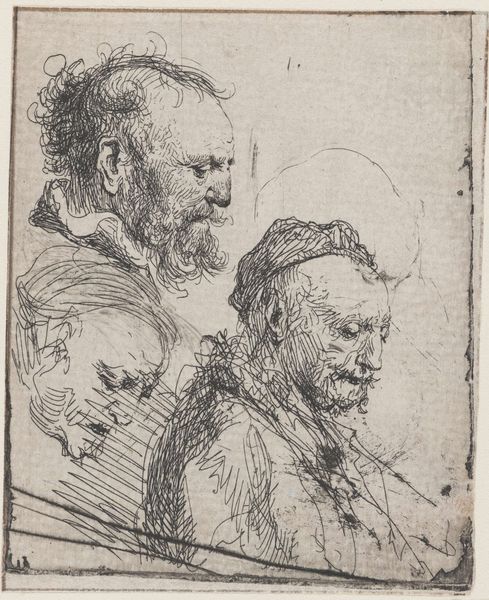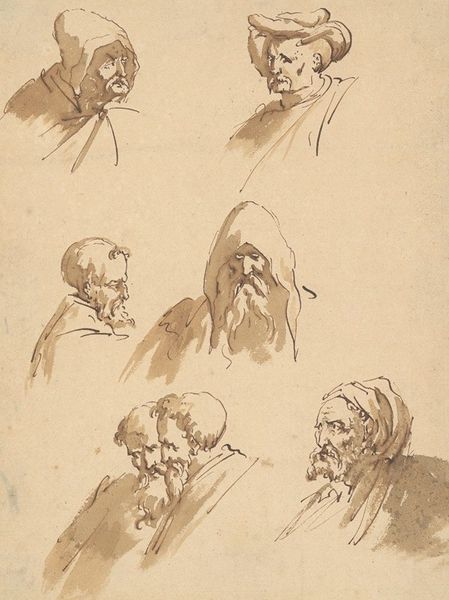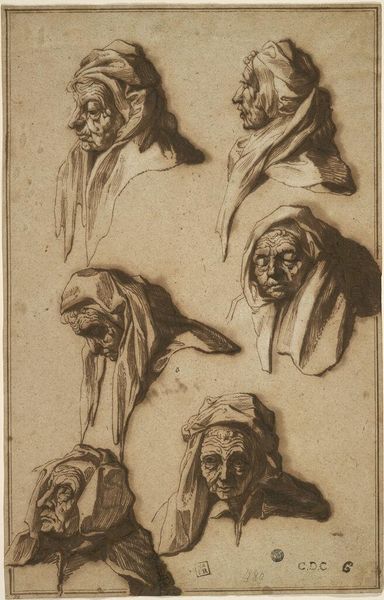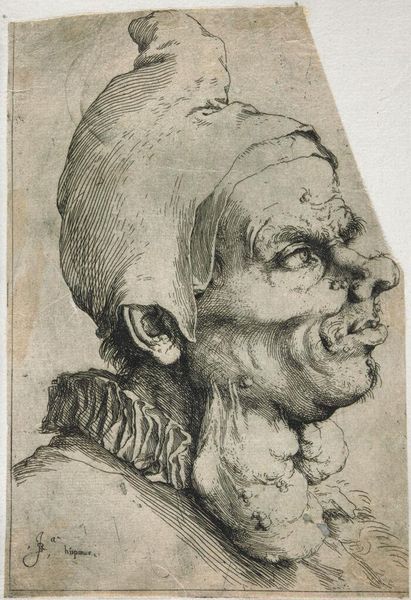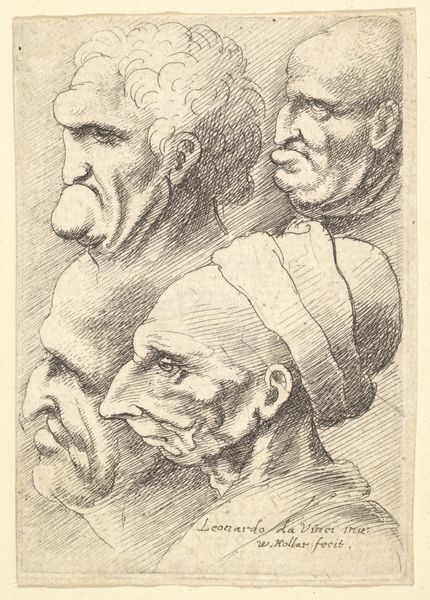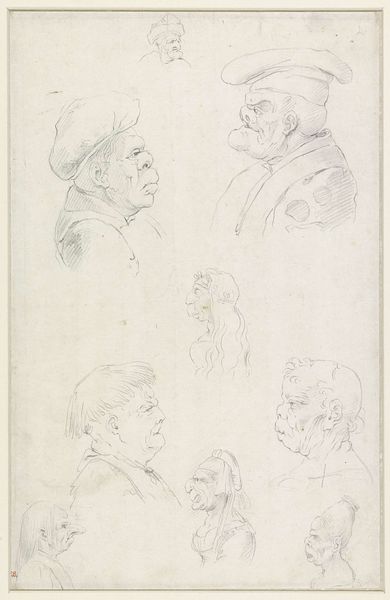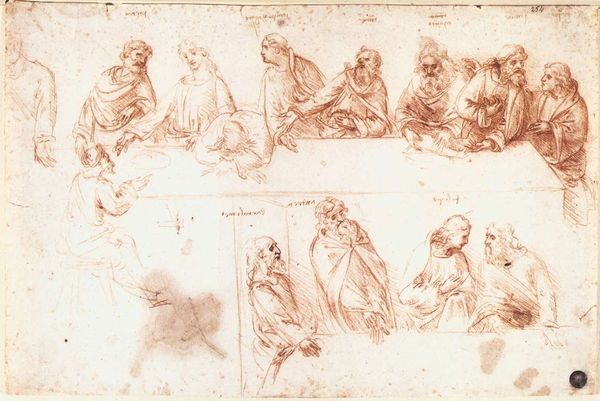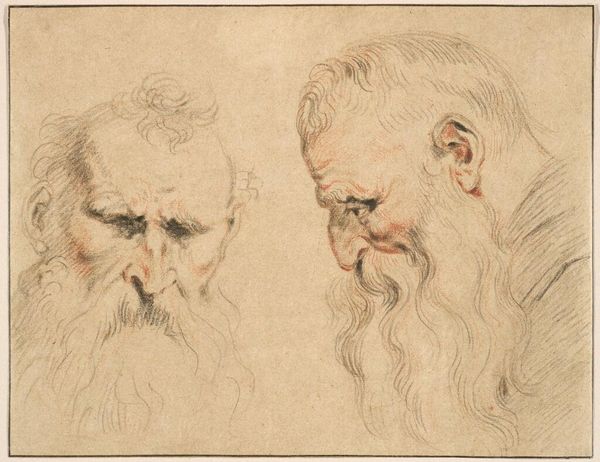
Five caricature heads 1490
0:00
0:00
leonardodavinci
Galleria dell'Accademia di Firenze, Florence, Italy
drawing, pen
#
drawing
#
caricature
#
figuration
#
11_renaissance
#
pen
#
academic-art
#
italian-renaissance
Dimensions: 18 x 12 cm
Copyright: Public domain
Curator: The initial feeling is almost grotesque; an assembly of faces rendered with such pronounced distortion, it is somewhat unsettling. Editor: We are currently viewing "Five Caricature Heads," a pen and ink drawing dating back to 1490, attributed to Leonardo da Vinci. The work is housed here in the Galleria dell'Accademia, in Florence. Da Vinci has created an undeniably exaggerated portrayal of human physiognomy, and his choices reveal how power dynamics may have influenced this composition. Curator: Absolutely. The line work itself—so precise, so sure—creates this peculiar tension. Each line seems meticulously placed, not just to represent form, but to amplify certain features in a hyper-realistic, yet skewed manner. There's a push and pull between accuracy and deliberate distortion. Editor: These "grotesque heads", as they were sometimes called during the Renaissance, became a fascination among artists, especially those working in courts. They offered an acceptable space to mock, reflect on social types and, sometimes, criticize members of the elite by associating them with those considered to be on the margins of society. Think about how identity becomes weaponized here; through pen and ink, Da Vinci renders these individuals into types. Curator: Right. There's an undeniable violence inherent in caricature. But I think Leonardo uses structure and contrast of shadow and line. These visual techniques serve as methods for exploring psychological dimensions that are not always on the surface of appearances. Editor: Considering this drawing exists within a specific cultural moment – Renaissance Italy, during the rise of humanism and growing social stratifications – what are the power structures influencing representation and spectatorship here? Curator: It really urges me to think about this drawing in our contemporary social media age of filters and distorted reality. Editor: These distorted images are an enduring testament to the power of representation and its ability to reflect, but also shape, our understanding of ourselves and others.
Comments
No comments
Be the first to comment and join the conversation on the ultimate creative platform.
